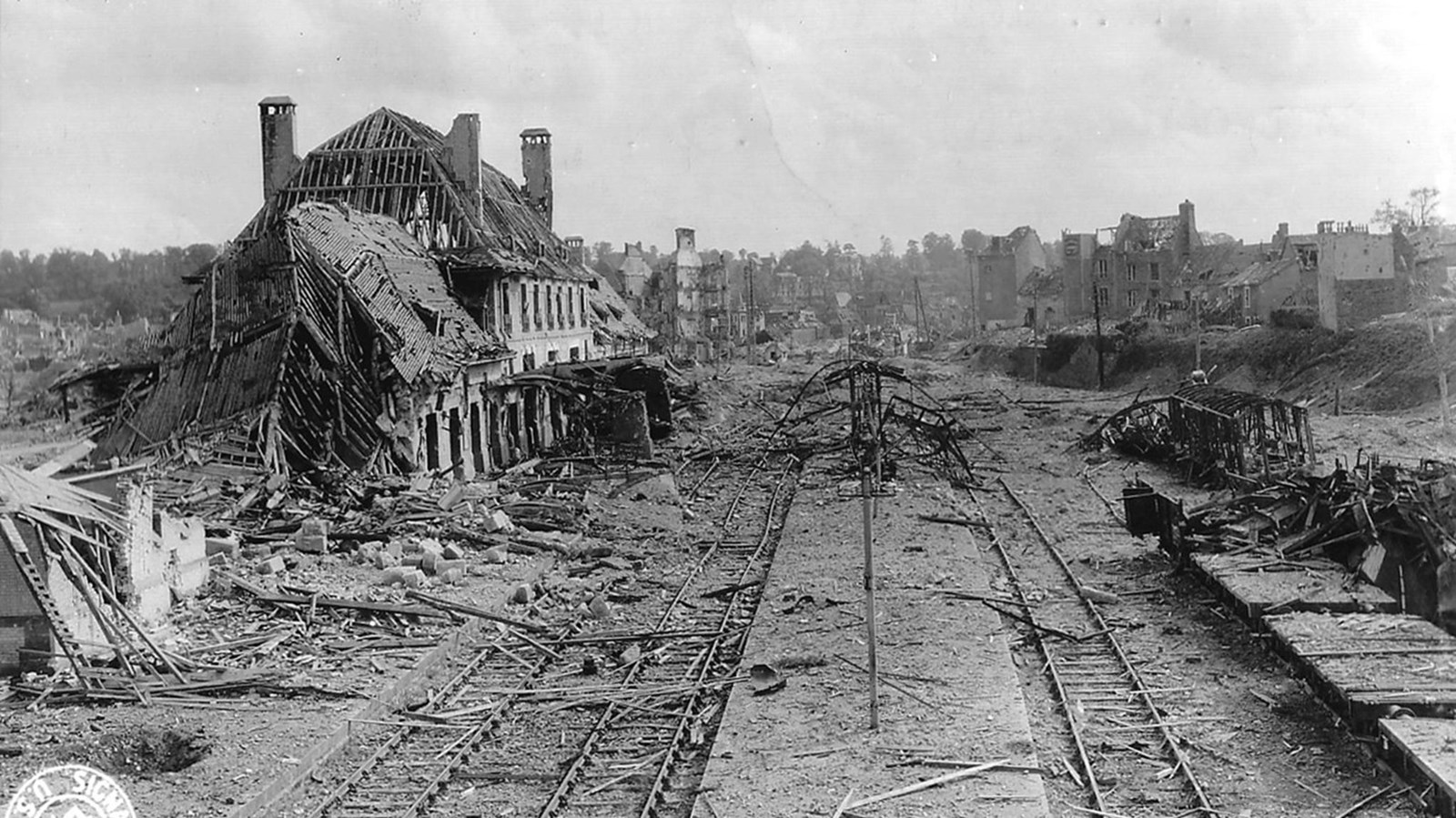Last updated: June 8, 2025
Place
St. Lo

National Archives USA
Following the successful Allied landings at Normandy on June 6, 1944, the city of St. Lo emerged as a key strategic objective for the Allies, particularly for the Americans. Situated less than ten miles from the invasion beaches, St. Lo represented a crucial gateway for breaking out of the Normandy beachhead and launching the liberation of northern France.
The city’s strategic crossroads made it vital for the Americans as they sought to establish a foothold and push deeper into Normandy. However, German forces mounted a fierce resistance, determined to halt the Allied advance. Utilizing the dense Bocage hedgerows surrounding the area, they effectively slowed or blocked American progress, turning the terrain into a formidable defensive barrier.
Despite the initial success of the invasion, the Germans quickly regrouped, limiting the Allies' advance to just ten miles inland. They continued to exploit the Bocage to their advantage, stalling the American push toward St. Lo.
After two weeks of intense ground combat and relentless aerial bombardment, American forces finally captured the city. Tragically, the bombardment devastated St. Lo, destroying 94% of its structures. Yet, its fall marked a pivotal turning point, allowing the Americans to press further into Normandy and continue their march across France.
